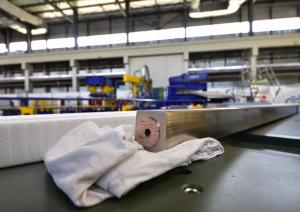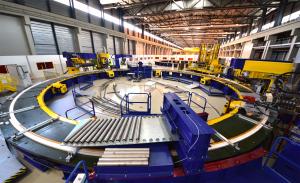With the winding machine now commissioned, the fabrication of a pre-dummy (a few more turns than the present sample) followed by an actual dummy for poloidal field coil #5 (17 metres in diameter) will begin in late June.
However, before dummy fabrication can start one last operation needs to be performed: the cleaning, from top to bottom, of all the surfaces inside the 12,000 square metres building to ensure the required clean atmosphere—a task that has just begun and will take about four weeks to complete.
Click here to view a video, produced by the European agency for ITER, on the manufacturing process of the ITER poloidal field coils.



